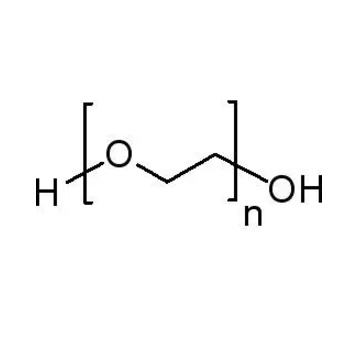文献:pH-Responsive NIR-II phototheranostic agents for in situ tumor vascular monitoring and combined anti-vascular/photothermal therapy
文献链接:https://www.sciencedirect.com/science/article/abs/pii/S0142961223003885
作者:Shuaishuai Bian , Xiuli Zheng , Weimin Liu , Zekun Gao , Yingpeng Wan , Jihao Li , Haohui Ren , Wenjun Zhang , Chun-Sing Lee , Pengfei Wang
相关产品:Polyethylene glycol Carboxymethyl-2000(聚乙二醇羧甲基 - 2000)
原文摘要:
Developing nanoplatforms integrating superior fluorescence imaging ability in second near-infrared (NIR-II) window and tumor microenvironment responsive multi-modal therapy holds great potential for real-time feedback of therapeutic efficacy and optimizing tumor inhibition. Herein, we developed a pH-sensitive pyrrolopyrrole aza-BODIPY-based amphiphilic molecule (PTG), which has a balanced NIR-II fluorescence brightness and photothermal effect. PTG is further co-assembled with a vascular disrupting agent (known as DMXAA) to prepare PTDG nanoparticles for combined anti-vascular/photothermal therapy and real-time monitoring of the tumor vascular disruption. Each PTG molecule has an active PT-3 core which is linked to two PEG chains via pH-sensitive ester bonds. The cleavage of ester bonds in the acidic tumor environment would tricker releases of DMXAA for anti-vascular therapy and further assemble PT-3 cores into micrometer particles for long term monitoring of the tumor progression. Furthermore, benefiting from the high brightness in the NIR-II region (119.61 M−1 cm−1) and long blood circulation time (t1/2 = 235.6 min) of PTDG nanoparticles, the tumor vascular disrupting process can be in situ visualized in real time during treatment. Overall, this study demonstrates a self-assembly strategy to build a pH-responsive NIR-II nanoplatform for real-time monitoring of tumor vascular disruption, long-term tracking tumor progression and combined anti-vascular/photothermal therapy.
Polyethylene glycol Carboxymethyl-2000:聚乙二醇羧甲基 - 2000,主要成分是聚乙二醇(PEG)。PEG 是一种由环氧乙烷聚合而成的聚合物。在这个化合物中,分子量约为 2000,并且在 PEG 链上引入了羧甲基(- CH₂COOH)基团。羧甲基的引入改变了聚乙二醇的化学性质,使其在保留聚乙二醇良好的水溶性和生物相容性的基础上,又增加了羧基的反应活性。这些羧基可以参与多种化学反应,如酯化、酰胺化等反应,为进一步的化学修饰提供了可能。基于Polyethylene glycol Carboxymethyl-2000的性能,合成介绍如下:

图:PEG 结构式
合成过程:
将聚乙二醇羧甲基 - 2000(PEG - CM - 2000)放入反应容器中,接着加入适量的选定反应溶剂,放入磁力搅拌子,将反应容器置于磁力搅拌器上,搅拌直至 PEG - CM - 2000 完全溶解,形成澄清透明的溶液。将称取好的吡咯并吡咯氮杂 - BODIPY 衍生物缓慢加入到上述溶液中,边加边搅拌,使其均匀分散在反应体系中。若反应需要偶联试剂和催化剂,随后依次将它们加入到体系中,继续搅拌,让各反应物充分混合均匀,搭建好初始的反应体系。在反应过程中,可以定期取样进行分析监测,进而对反应时间等条件进行适当调整优化。
反应结束后,将反应体系从加热设备上取下,自然冷却至室温。然后将反应液转移至旋转蒸发仪的烧瓶中,开启旋转蒸发仪,在适当的温度和真空度下,旋转蒸发除去有机溶剂,直至烧瓶内只剩下少量的粘稠状物质,此时大部分有机溶剂已被去除。接着向剩余的物质中加入适量的洗涤试剂,利用分液漏斗进行分液操作,收集含有产物的有机相,重复洗涤几次,以洗去未反应的水溶性杂质等。若产物在水相,则相应地收集水相并进行后续合适的处理。
向收集到的有机相(或经处理后的水相产物)中加入适量的无水硫酸钠,搅拌使无水硫酸钠充分吸收有机相中的残留水分,然后过滤,除去无水硫酸钠固体,得到相对干燥的产物溶液。
结论:
该文献成功制备出基于Polyethylene glycol Carboxymethyl-2000合成的pH敏感的吡咯并吡咯氮杂-BODIPY基两亲分子(PTG)。PTG进一步与DMXAA共组装,制备PTDG纳米颗粒,用于联合抗Blood vessels/光热Treatment 和实时监测tumourBlood vessels破坏。数据显示该材料取得良好的实验效果。

 2025-08-11 作者:ws 来源:
2025-08-11 作者:ws 来源:

